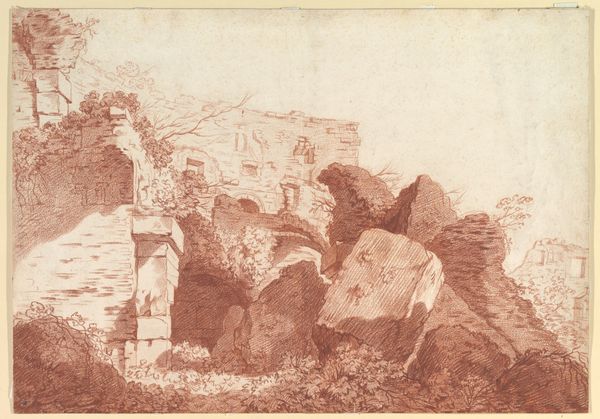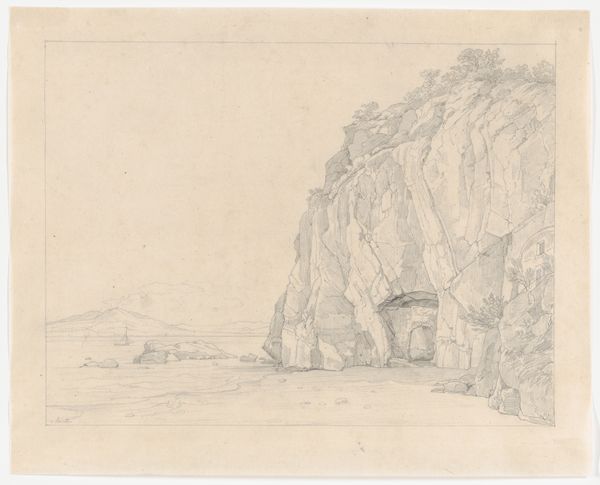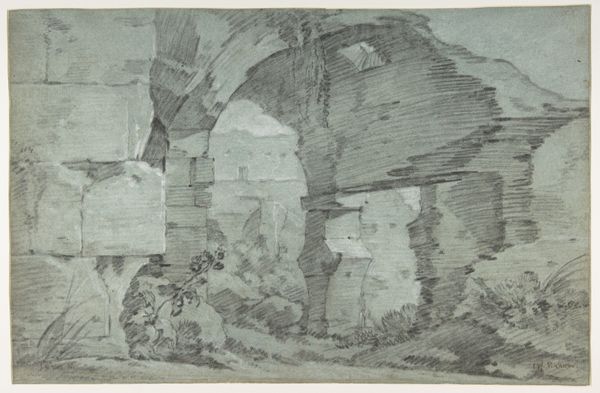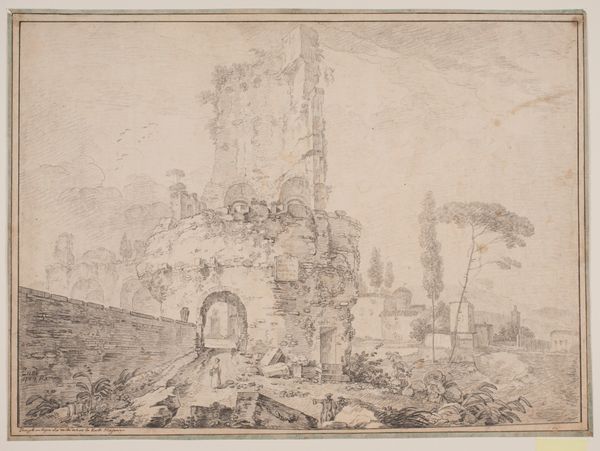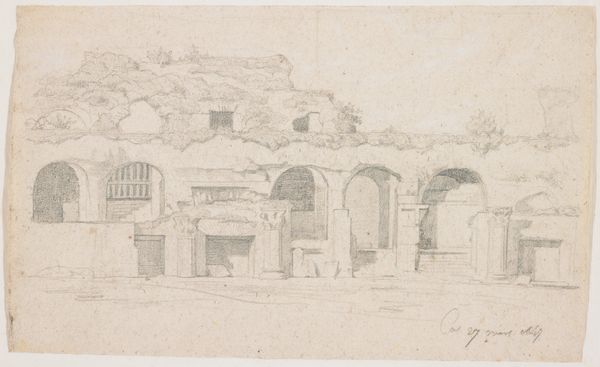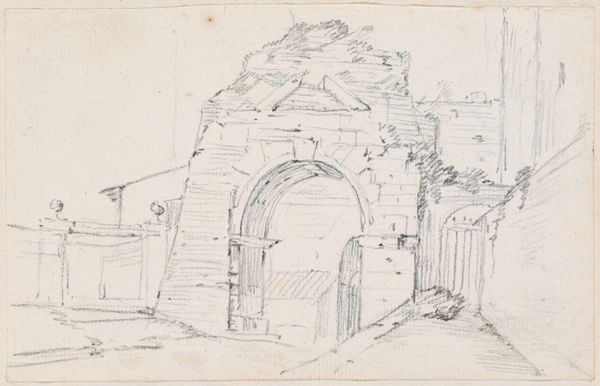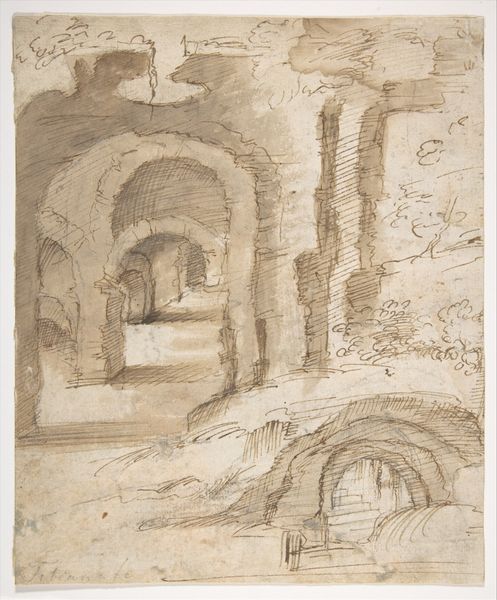
drawing, print, etching, ink
#
drawing
#
ink painting
# print
#
etching
#
pencil sketch
#
landscape
#
etching
#
ink
#
history-painting
Dimensions: 7 3/8 x 10 5/8in. (18.8 x 27cm)
Copyright: Public Domain
Curator: Here we have Aniello Falcone's "Ruins of the Roman Arena at Pozzuoli," an etching in ink that, despite its age, feels incredibly present. I would estimate it was made sometime in the mid-17th century. What's your initial impression? Editor: Haunting, I think. The level of decay almost overshadows the monumentality that surely was intended in its original construction. It evokes questions about power, loss, and what remains after societal shifts. Curator: Exactly. Falcone's focus wasn’t on the grandeur, but on time’s inevitable effect. Consider the use of ink; the faded brown ink echoes the crumbling stones. In many ways it also emphasizes how power fades, even ruins turn into icons of the past and of memory. Editor: It's a striking commentary on the ephemeral nature of power, particularly male displays of power in public arenas throughout history. Arenas like this, they were sites of brutality but also community. It almost feels like he’s capturing the moment where that duality collapses. Curator: Indeed. I'm drawn to how the vertical lines, likely indicating columns, still hold their rigid form, in spite of being worn away by time. The endurance of the structural memory of a time gone by is interesting, right? These fragments whisper of the past. Editor: Absolutely. And those jagged edges, those openings, the deep recesses of the arches are incredibly evocative. You think of the stories those stones could tell if they could talk. Now the animals graze peacefully as any potential audience has long departed, the ruins stand to me as a symbolic statement. It has returned back to its origins. Curator: A poignant observation. There's a definite layering of eras happening. Editor: Yes. In this regard, ruins are visual metaphors, inviting contemplation on time, civilization, and ultimately, human fallibility. Curator: It is truly something to experience. This arena, now captured through Falcone's careful hand, inspires a deep appreciation of the historical narratives art so subtly conveys, don't you think? Editor: Undeniably. Seeing the marks of erosion as testament rather than defeat is certainly compelling. I can better appreciate its enduring power now.
Comments
No comments
Be the first to comment and join the conversation on the ultimate creative platform.
